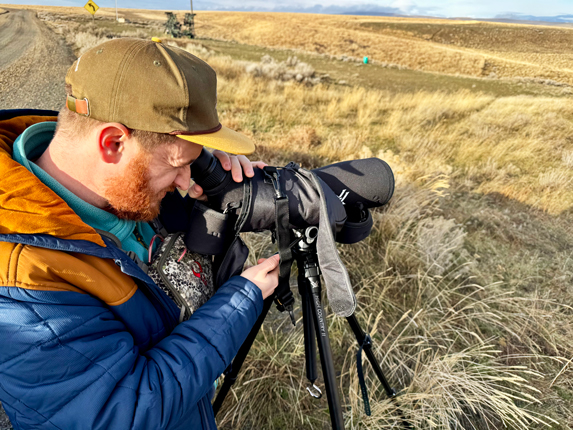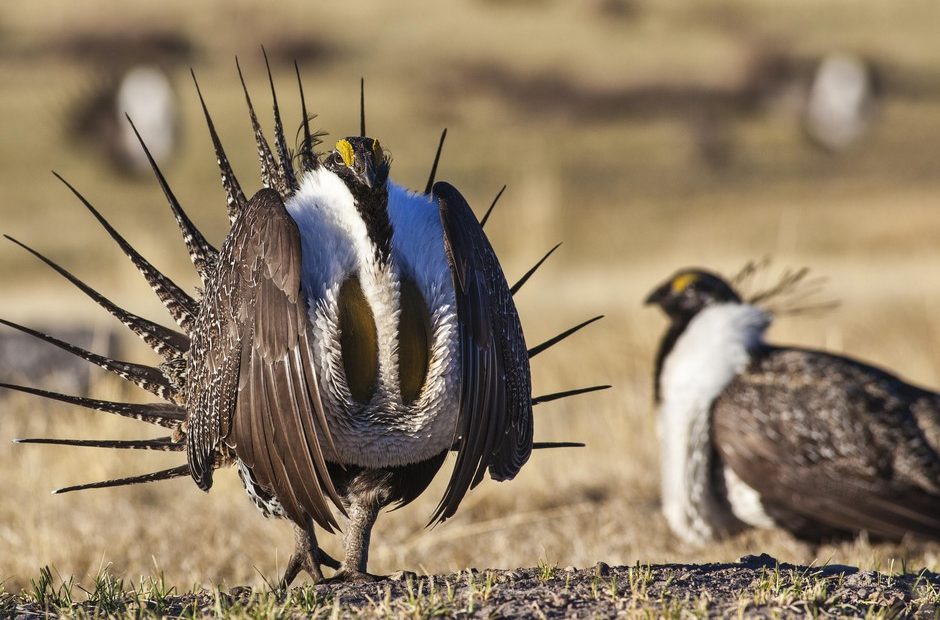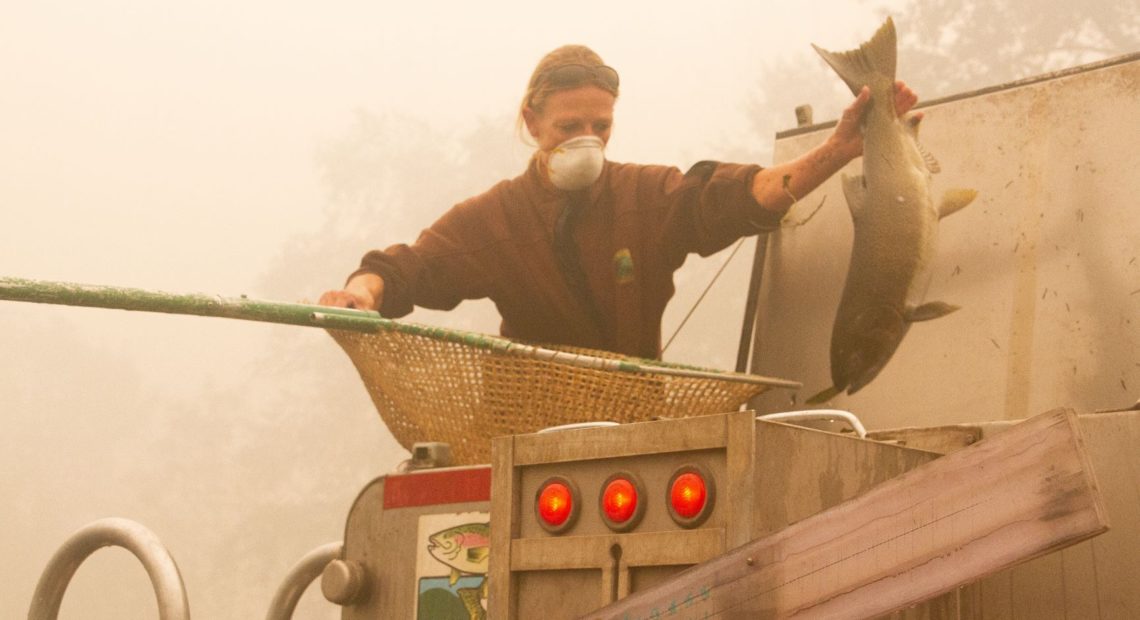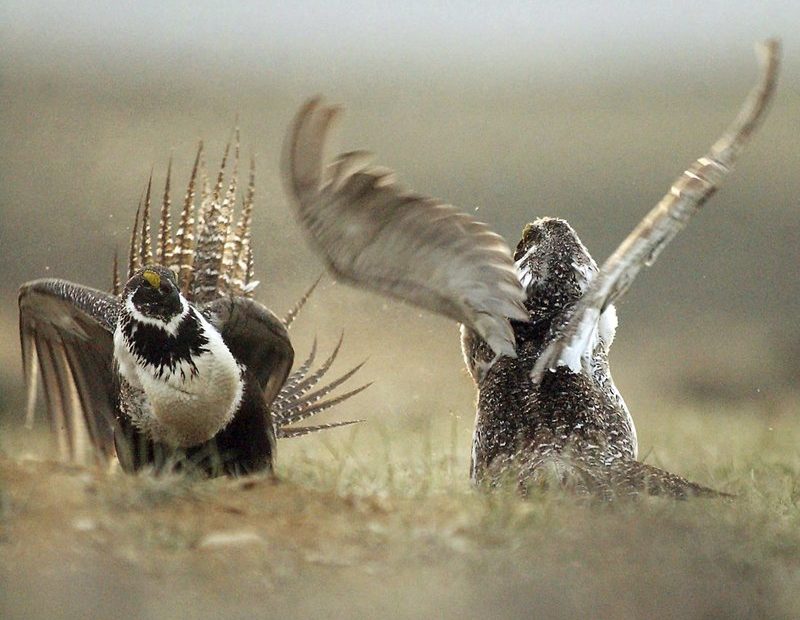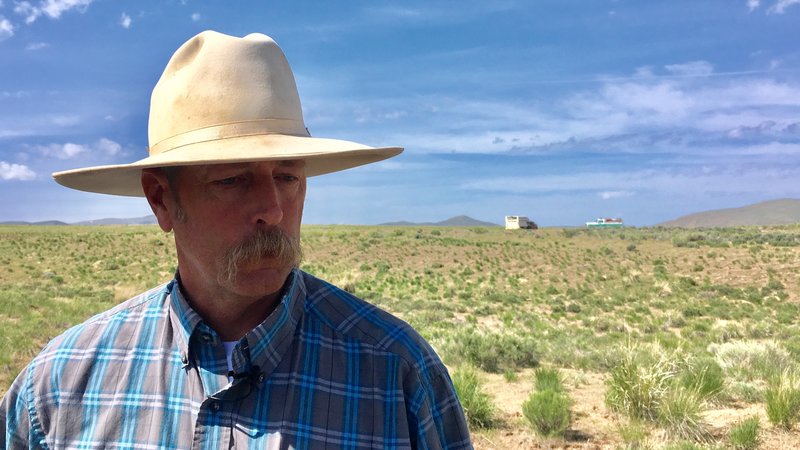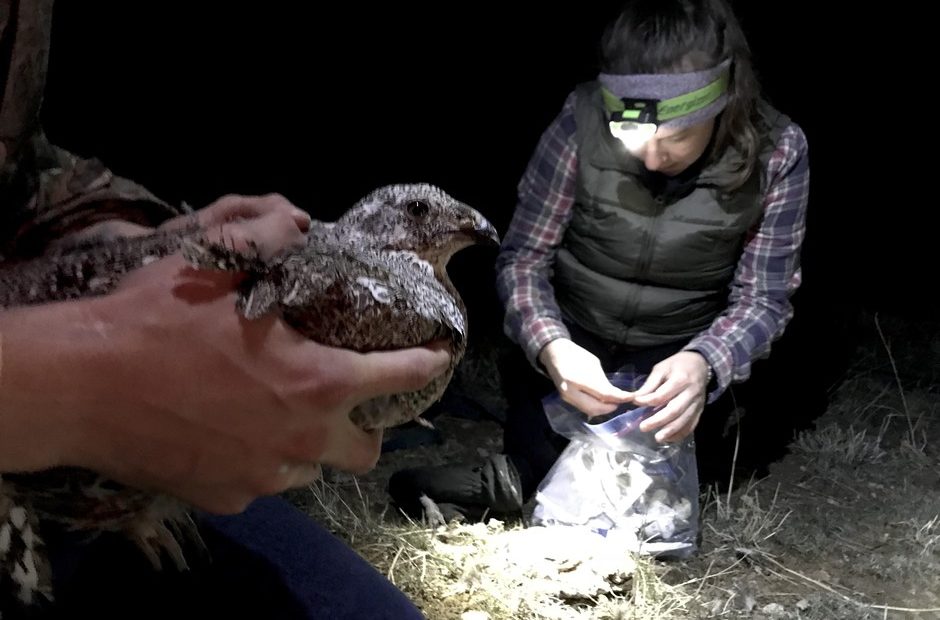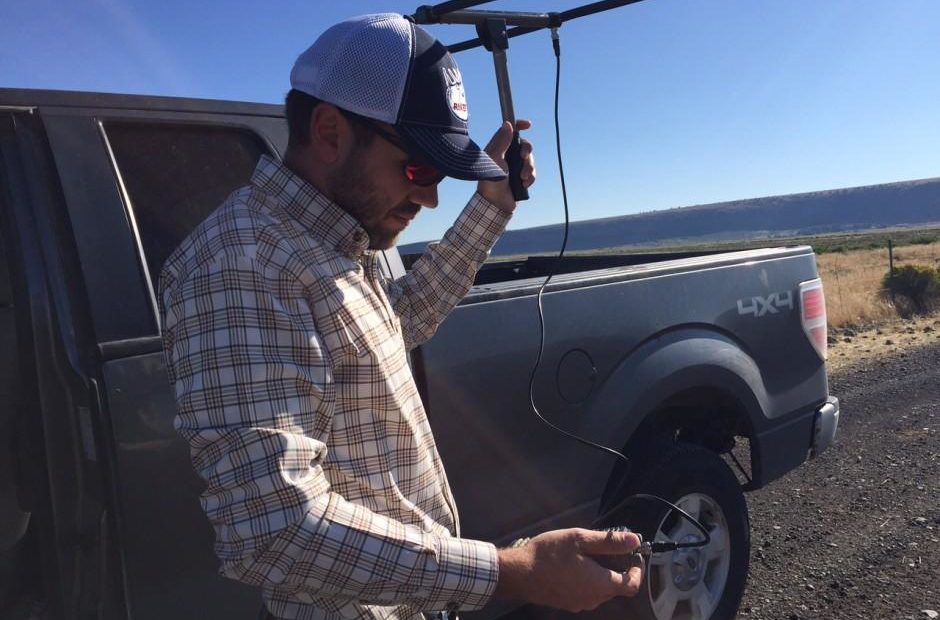Seth Hulett, Audubon Washington’s senior program manager of the Columbia Plateau, searches through his spotting scope for sage grouse. (Credit: Courtney Flatt / NWPB) Listen (Runtime 4:12) Read In south-central […]Read More
Sage grouse in the Columbia Basin are cut off from others in Oregon and southern Idaho, making them unique in their recovery. In 1998, Washington listed its sage grouse as threatened. They now occupy around 8 percent of their historic range in the state.Read More
“In this year of, well, exceptions, we’ve been handed an unprecedented level of damage to our wildlife mitigation program,” a Washington state wildlife biologist recently told the Northwest Power and Conservation Council.Read More
Grouse numbers also continued to drop in 2019 in Oregon, Idaho and Wyoming. Weather can affect populations from year to year, and wildlife officials say those short-term cycles are most directly responsible for the recent declines.Read More
Moving imperiled sage grouse from one spot to another can be hard on the birds. But research from Washington State University suggests that after a restless adjustment period, the birds eventually get used to their new homes.Read More
After hours of testimony, a federal judge in Portland extended a temporary restraining order as he considers whether or not to prevent a controversial Harney County ranching family from grazing their cattle on certain parcels of public land in southeast Oregon.Read More
It may seem, to anyone who has driven long stretches of highway across the West, that there is plenty — maybe even more than enough — sagebrush. Sagebrush once covered 250 million acres of western North America, but today that ecosystem is half the size it once was and it's burning more frequently.Read More
Deep in Oregon’s sagebrush country, there’s one county with an abundance of ravens. Biologists say those ravens like to eat sage grouse eggs, and they’ve come up with plans to take care of the raven problem. That’s got bird advocates questioning whether killing one bird for the sake of another is the right move.Read More
The Trump administration is lifting restrictions meant to protect greater sage grouse across seven western states. In Oregon grazing restrictions are being removed in 13 locations that provide habitat for the imperiled birds.Read More
The Trump administration wants to reduce restrictions for greater sage grouse across seven states. For the imperiled birds in Oregon, that means fewer grazing restrictions in some specific habitat. The decision has rankled conservation and hunting groups and been supported by ranchers.Read More
Grazing restrictions on public lands may have unintended consequences for greater sage grouse, according to a recent study. The imperiled birds depend on habitat on both public and private lands, and much of that habitat can be lost when ranching operations go under.Read More
Sage grouse are found in 11 Western states. But they’re in trouble. In Oregon, their fragmented habitat is threatened by human development, invasive species, wildfires and overgrazing. Researchers are just starting to look into raven depredation, a more controversial problem for the birds. In a policy shift, the federal government wants sage grouse work to focus on the Read More
Andrew Shields, a wildlife biologist for Roaring Springs Ranch in southeastern Oregon, searches for a radio collared sage grouse. Photo credit: Courtney Flatt Listen The plight of greater sage […]Read More

